You will be equipped with the following tools:
-
100 Dreams
Help others gain valuable insights and develop an open mind toward creativity and self-created possibilities for experiencing more happiness.
-
Analyzing the Demands on Your Time
Help clients develop a deeper understanding of the demands on their attention, consider ways to spend more time on the things they care about, and increase subjective happiness and well-being.
-
Balanced Time Perspective
Help clients understand time perspectives and identify their time perspective biases so that they can increase subjective well-being, happiness, and life satisfaction.
-
Bucket Fillers
Help clients understand the effects of their words and behaviors on their well-being and the well-being of others using the bucket filler principle.
-
Counting Kindness
Help clients become more aware of their kind behavior toward others, so that they can experience increased subjective happiness and other positive emotions related to selfless service to others.
-
Creating Flow Experiences
Design a flow experience with your client to increase the amount of flow in their daily lives and better understand the role of intrinsic motivation.
-
Fostering Appreciation by Temporary Abstinence
Help clients appreciate the small things that please them in life through temporary abstinence. Temporarily giving up an enjoyable activity will renew appreciation and remind them of the everyday experiences that make them happy.
-
Gratitude for What is No Longer Here
Help clients develop gratitude by shifting their focus from what was lost to the blessing of having had it in the past and support them in taking future-oriented, values-based actions.
-
Life Chapters - Mapping Meaningful Experiences
By visualizing a timeline for creating meaningful experiences, help clients to avoid the trap of excessively delaying gratification and appreciate the benefits of enjoying certain experiences sooner rather than later.
-
Making Important Things More Enjoyable
Help clients get enjoyment out of important everyday tasks by pairing them with a more gratifying activity to make them more enjoyable and increase in-the-moment satisfaction.
-
Mental Subtraction of Relationships
Help clients increase appreciation for important people by contemplating an alternative scenario in which they never met so that they can appreciate their presence more deeply.
-
Planning Events To Look Forward To
Help clients plan and anticipate future positive activity. By doing so, clients can feel good about the future, experience and savor a host of positive emotions before the event occurs, and increase subjective happiness and well-being.
-
Pleasurable Activities Journal
Help clients increase opportunities to experience joy by planning and recording pleasurable activities. In doing so, clients will become aware of and make space for activities that boost their mood and improve wellbeing.
-
Spending Money on Others
Help clients experience the effect of giving away resources on their well-being as opposed to gaining or taking resources.
-
The Four Archetypes of Happiness
Help clients understand the four archetypes of happiness. With a deeper understanding of how people seek happiness, clients can identify ways to change their approach to give more present enjoyment and long-term satisfaction.
-
The GLAD Technique
Help clients understand the G.L.A.D. technique so they can challenge negative thinking and increase subjective happiness by becoming more aware of the positive things that happen around them daily.
-
The Joy Of Missing Out (JOMO)
Help clients understand the joy of missing out and shift their perspective from FOMO to JOMO so that they can avoid fear-based decisions and instead make more informed and balanced choices.
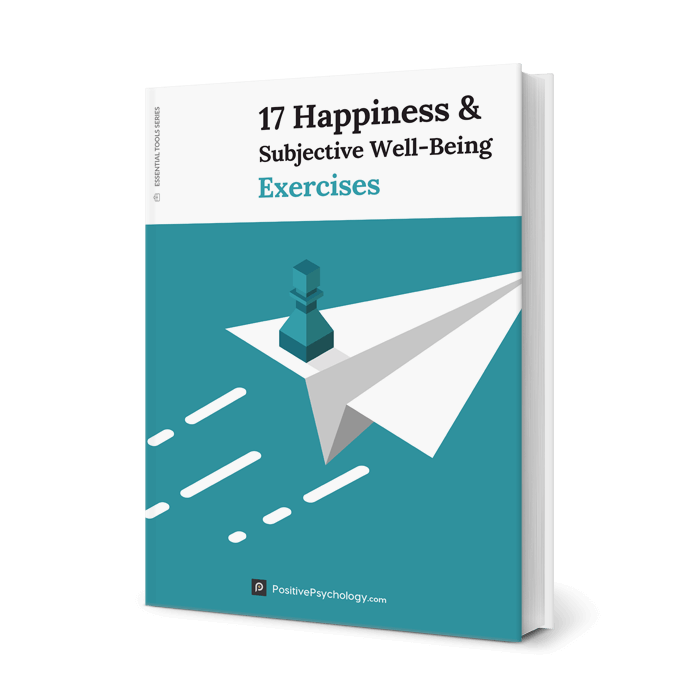
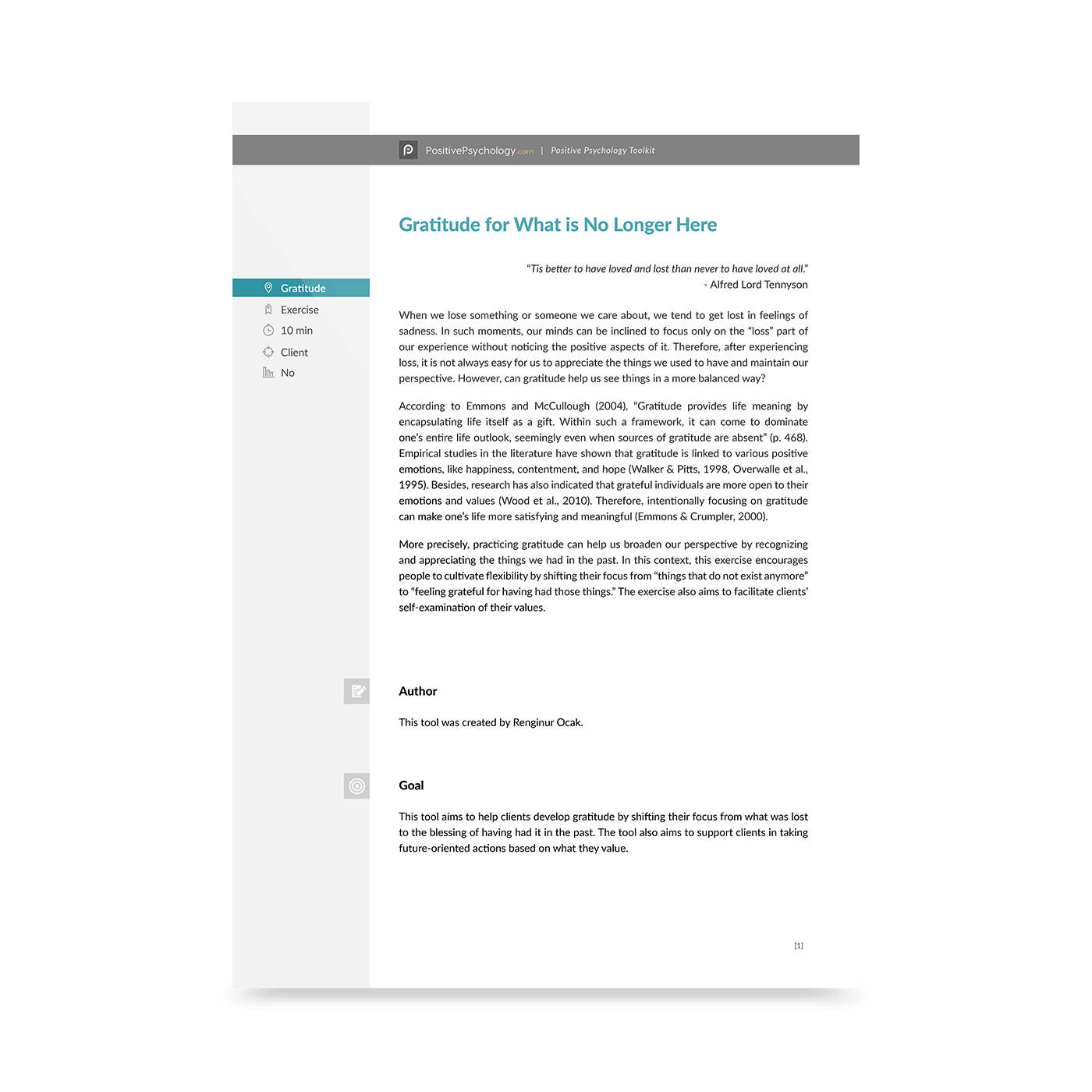
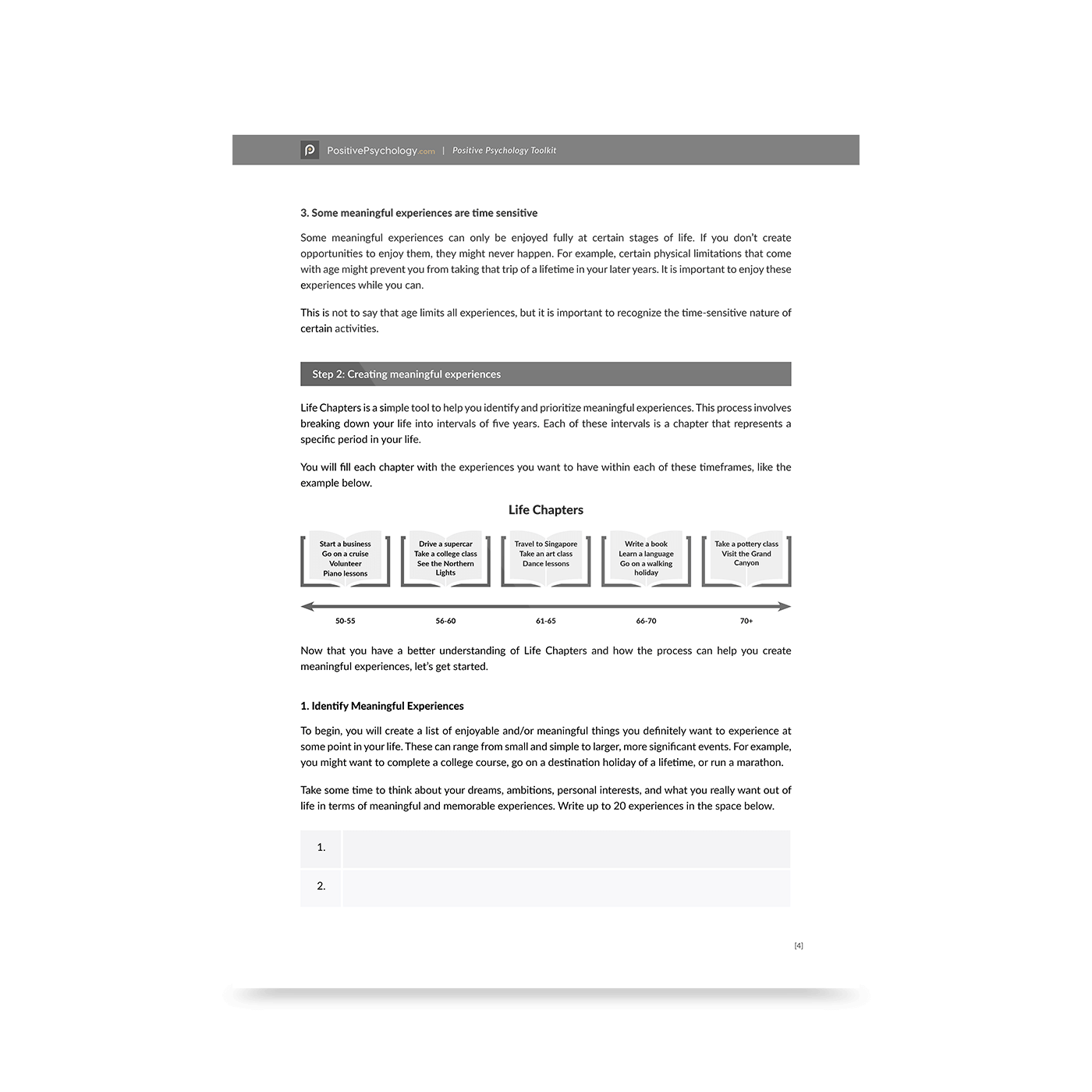
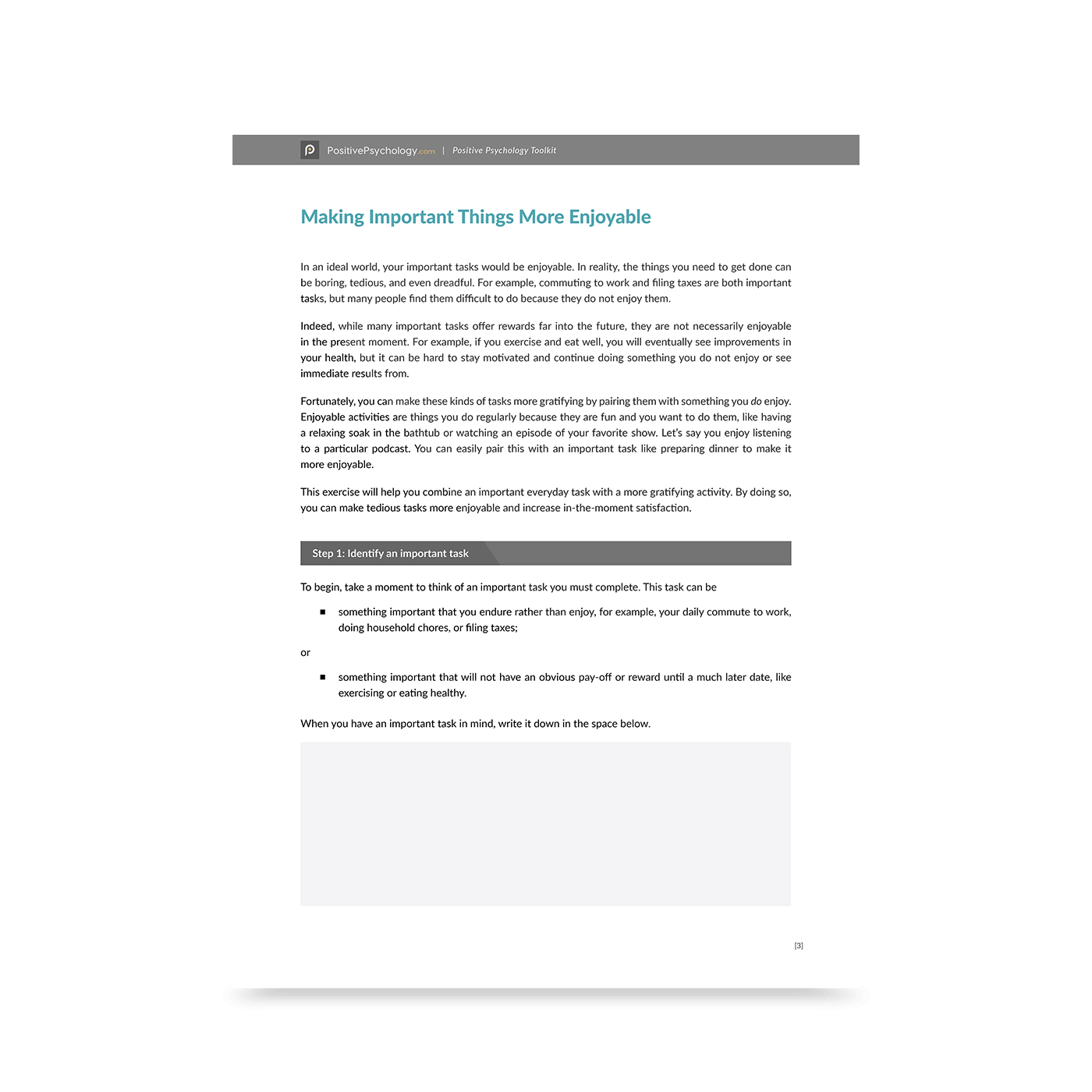
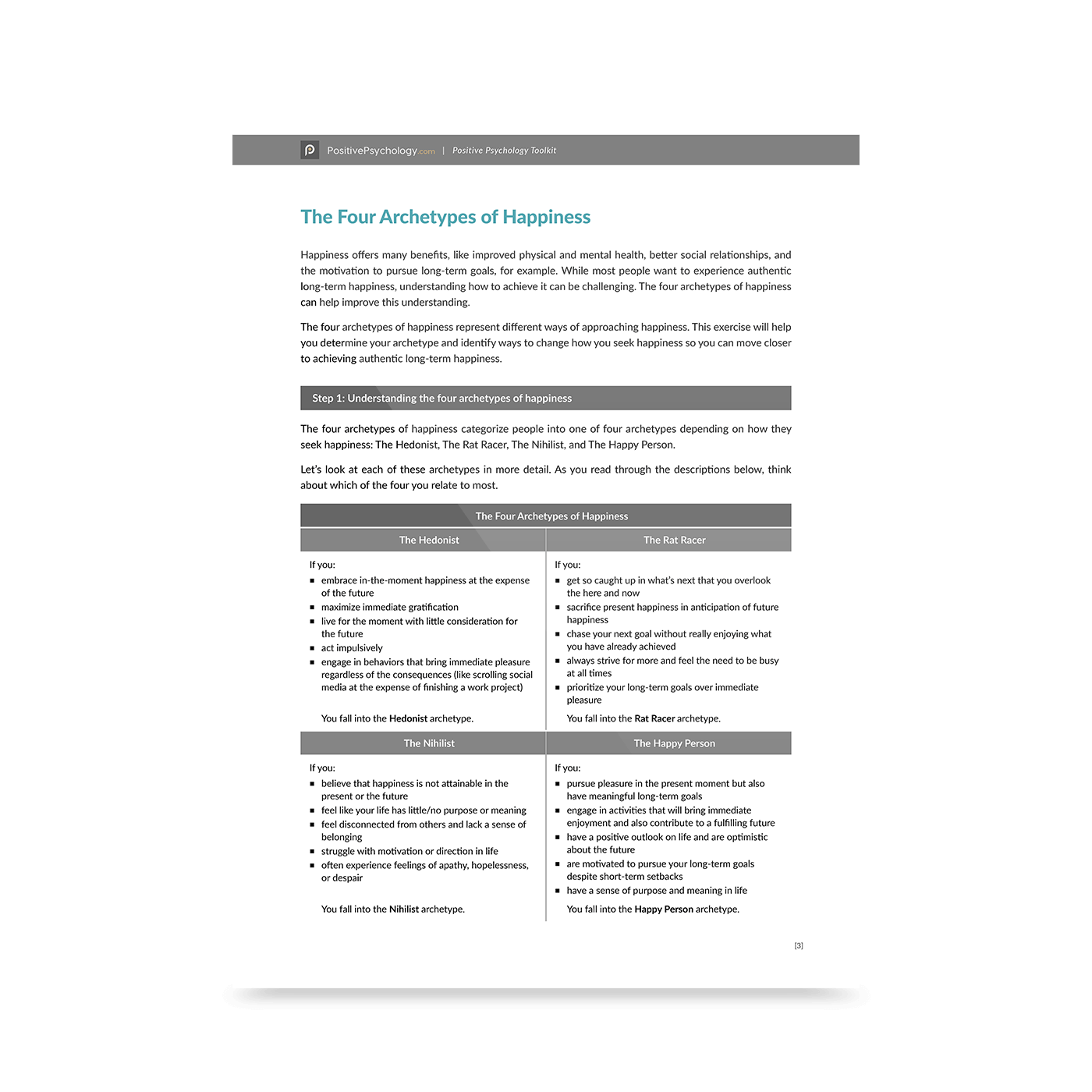
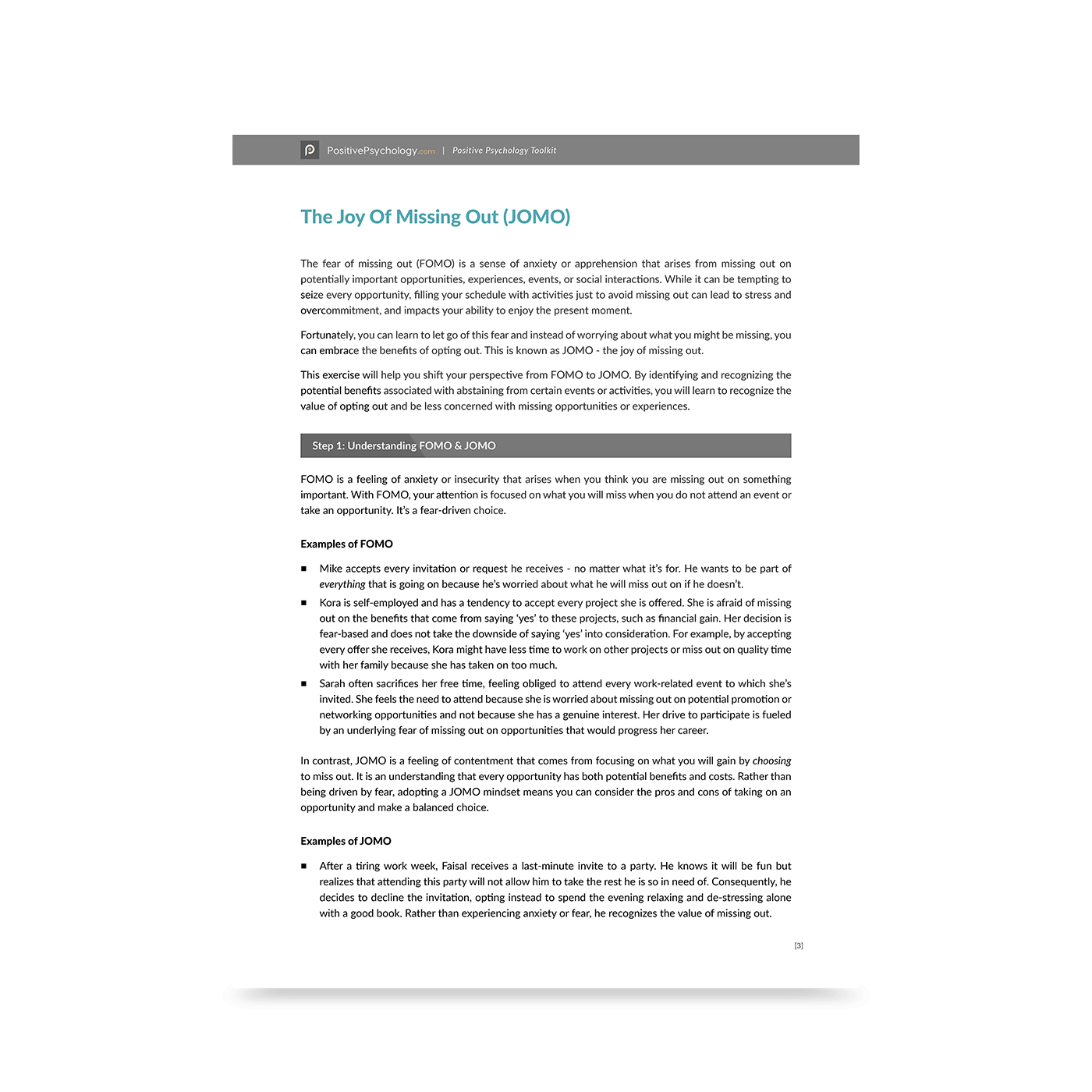


















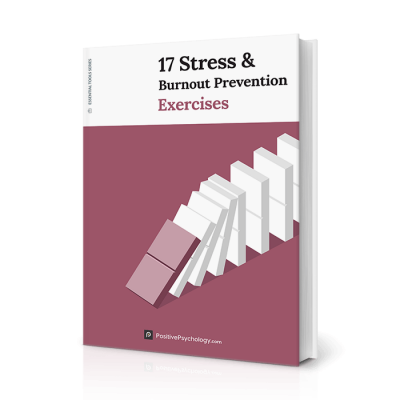
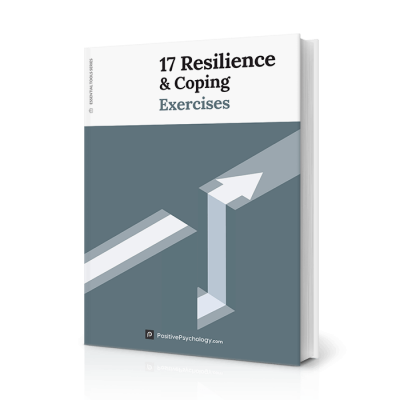
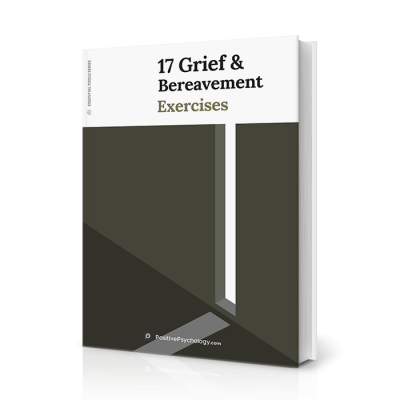
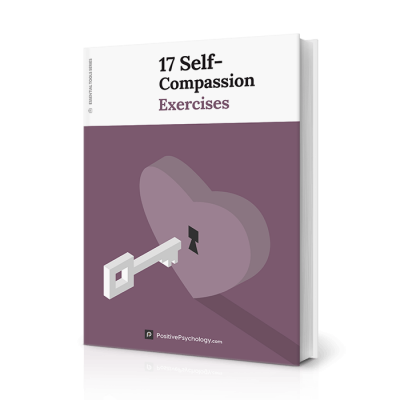
Gregory Levy –
I appreciate the structure of the 17 Happiness & Subjective Well-Being exercises. They are well-adapted to the practice of coaching and enable everyone to achieve greater fulfillment! Furthermore, the fact that sources are cited is a significant asset as the information can be used to go deeper into specific topics of interest. I do, however, regret the lack of translation, into French for example.
Fay Younger CIPD, FRSA –
Easy-to-follow structure for all the Happiness and Well-Being exercises and the reflection questions at the end are really helpful to underline learning. These exercises offer a diverse range of options that are effective for clients seeking to increase their happiness, especially during life transitions when they are looking to find meaning and purpose.
Elizabeth Wood, LLMSW –
These worksheets are very informative and easy to use. Most people I work with struggle with happiness, hence, the 17 Happiness and Well-being exercises are a great tool to use in sessions and at home. I work with both adults and youth and feel that these exercises are applicable to any age group.
Polina Maltseva PsyD –
These 17 Happiness & Well-Being exercises really helped me and my clients to take a fresh look at their lives. Each exercise, despite its simplicity, works with tremendous depth.
Dimitra Mousioli, MSc –
I would recommend these exercises not only to positive psychology practitioners but to school teachers, students, parents, and every other person who struggles with happiness. These 17 Happiness and Well-Being exercises can help clients live a more positive life along with advice on how to apply them in the most efficient way.
Mari Carmen –
The 17 exercises for Happiness and Well-Being are great as they prompt immediate engagement from the client and help them realize a more positive attitude on a daily basis. On another note, a translation to other languages would be helpful.